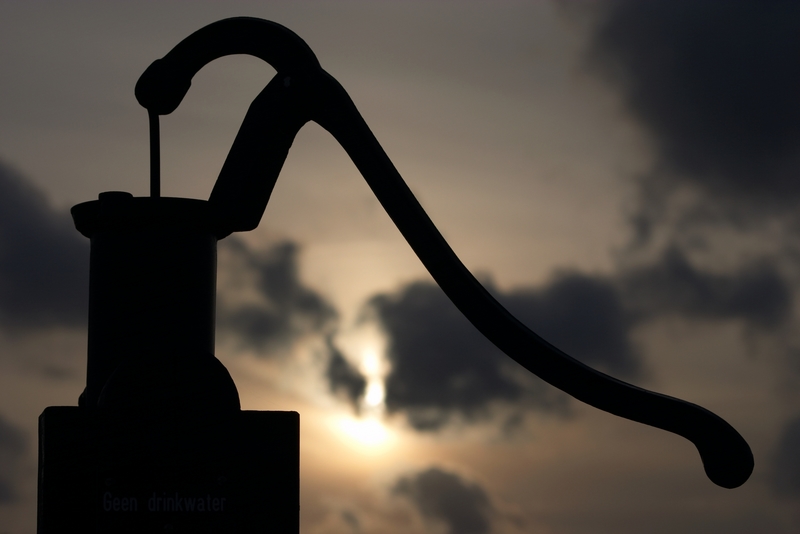The title says this water collection article is for those off-grid, but really, it is applicable for any situation where water is scarce – whether you live in a city or in the middle of nowhere.
Here are a few common ways to collect water if running water is not available.
Harvesting Surface Water
I do remember once, in 1989-1990, when we were traveling through the remote desert of Southern Utah — a long stretch of nothing, traveling a slow 20-30 miles a day — over to Grand Junction, Colorado, that we hauled barrels of water for the horses in our cart behind the wagon. It was interesting that the horses seemed to know that we didn’t have much water and just sipped it. We did run out of water as that stretch of road had nothing until we came across a gully/arroyo that had signs of a recent flash flood. We climbed down into the ditch and dug down about two feet to give the horses all they could drink and fill up our barrels.
Because we always had animals (horses, goats, chickens, kids, dogs, and cats) water was one of the first things we would look for whenever we made a stop or went to set up a homestead.
A Hand-Dug Well
In Alabama, our homestead consisted for a few years of a very old primitive, probably previously a slave, house. It had a hand-dug well with a hand-carved windlass that was a thing of wood art. However, the well had caved in or the water table had dropped, so there was no water coming up in the bucket. My dad went down into the well, over 80 feet deep, to have us haul up buckets of rocks, dirt and, finally, mud as he cleaned it out.
I remember this clearly although I was only 6, as it was hard work for all of us, and I had never been so scared for my dad in my life. You could hardly see the dot of light that was his huge lantern down there. The windlass had a very long handle, as my tiny mother and I slowly, but easily, turned it to haul the bucket of debris up. I remember being told that we couldn’t allow the full bucket to drop as it could hit my dad on his head and kill him. All the work was worth it for that sweet well water that we could haul up for drinking, cleaning, and cooking. I don’t remember using it to water the animals.
Rainwater Harvesting with Sand-Charcoal Filtration
In Tennessee, it was a daily “chore” to ride the horses down the hill to the creek to water them and to go swimming (bathe). In the winter, we collected water off the roof of the barn for them and off the roof of the house for us. At our house, we made a sand/charcoal filter (basically layering charcoal to make it taste better and topping it off with sand to filter out the little leaf debris) to run the water through before storing it.
If you put a screen on top of the bucket charcoal/sand filter and have an open-ended gutter pipe come at it at a 45-degree angle, any big leaves/debris are caught by the screen and then washed/cleaned off by the angled water flow. This is how I do my rainwater barrels to this day. I remember at least three houses that we lived in that had underground cisterns to store the rainwater. They did require at least an annual patching with cement and food-grade, rubberized paint to keep them from leaking.
These are probably the three most basic ways of collecting water if you do not have running water or stored water.
There are other options such as using a still and in many cases, employing several collection techniques is necessary to make sure you have enough water to meet your needs.
To learn more about water collection methods, please visit Mother Earth News.

An artesian well is also a feasable option